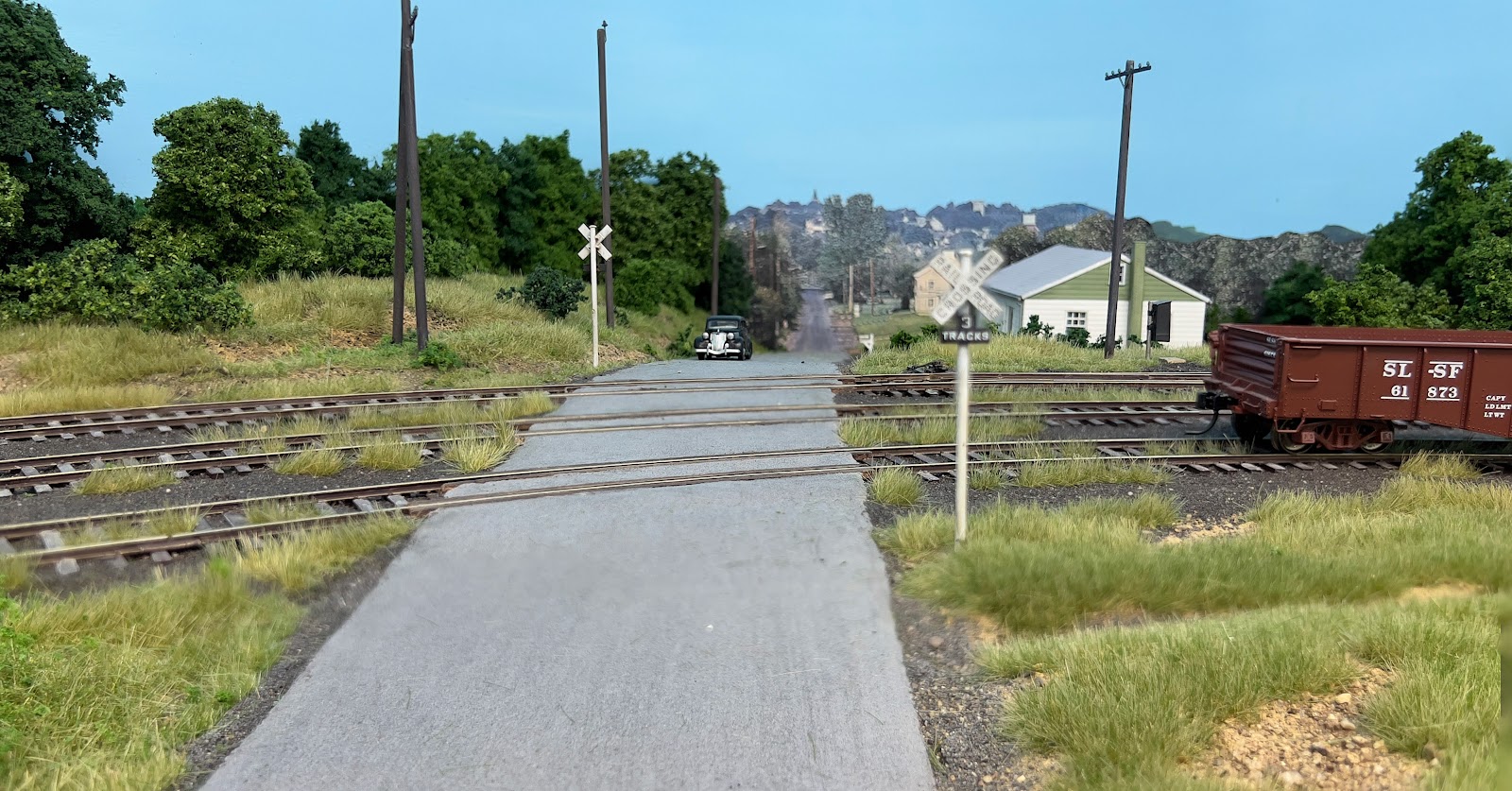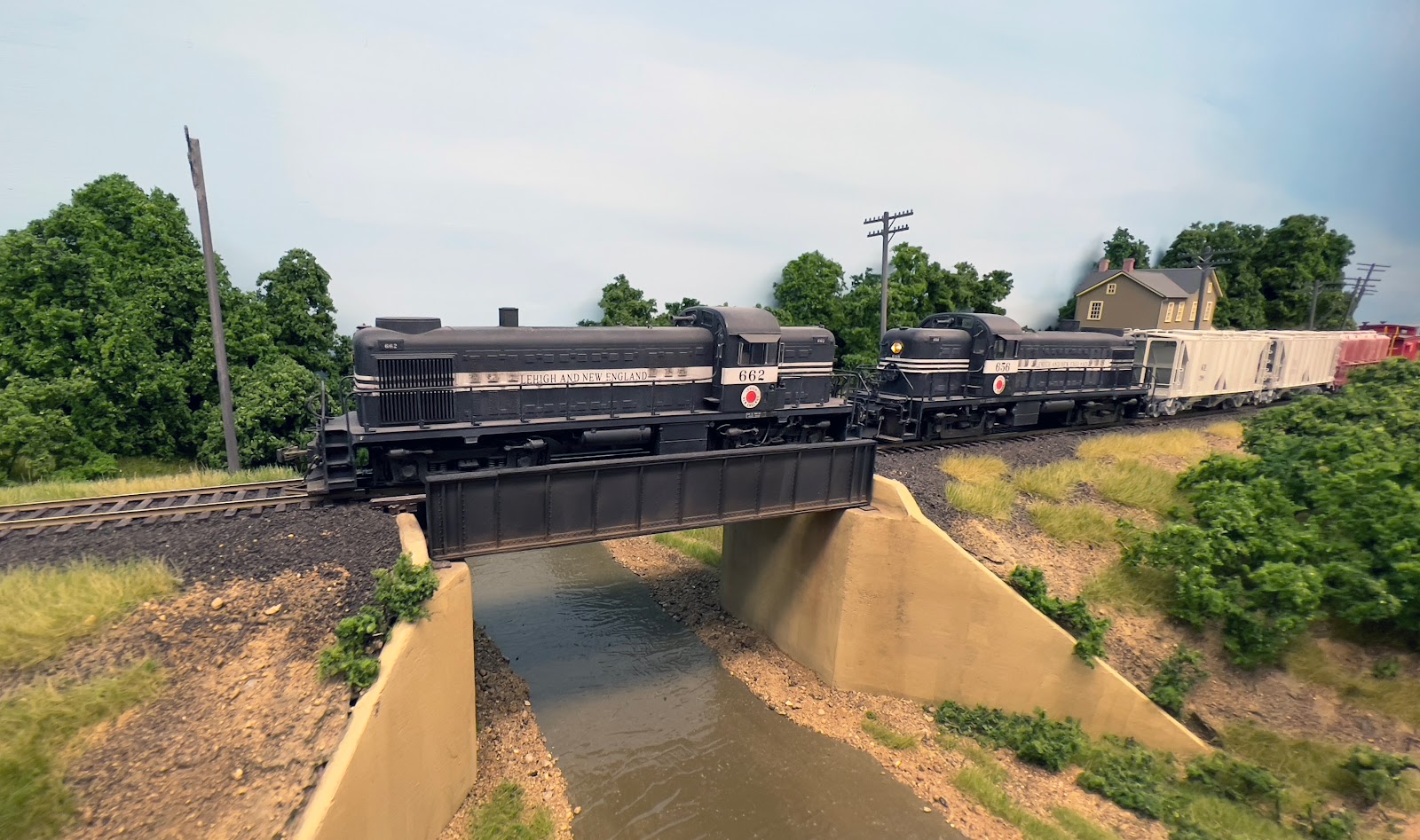In the past few days I had the chance to visit Todd Hermann's and Marty McGuirk's model railroads. They both model branch lines, but they have completely different flavors. I am a big fan of branch line models railroads because they tend to be manageable projects that allow the builder to create highly detailed scenes and structures. In today's busy world with so many demands on people, having a project that is manageable is something that should not be undervalued. Many of us want to model multiple deck railroads with CTC and signals and massive yards with dozens of operators. But projects of such scope are unobtainable goals for most of us. Building a manageable branch line doesn't mean you are settling for something less as these two fine layouts demonstrate.
 |
| A very well done level crossing |
Todd models the area of Catasaqua, PA. This is a region crisscrossed by several railroads serving numerous heavy industries. Todd's main focus on is on the LNE, but he also has a large yard for the Reading Railroad and large section of the Lehigh Valley's 4-track line. His concept is to focus on the LNE but he needed the LV and Reading on the layout too as the LNE interchanged with both.
 |
| The LNE cross a creek in a wooded area. |
His layout includes a really neat diamond crossing where the LNE crossing the LV 4 track mainline on a super sharp curve and then crosses Lehigh River. Because of the peculiarities of the how the railroad is situated in the basement, he had to build two versions of the bridge over the Lehigh River. For more detail on how he did this see Chapter 10 "Diamonds in the Tracks," in Model Railroader's book, "What's in a Photo."
Despite the emphasis on heavy industry, Todd was able to include some bucolic scenes on his layout.
Todd has several interesting prototype photos displayed on the walls of his layout rooms and workshop. Some that caught my eye were of the 19th century Crane ironworks that was once in Catasaqua. This would make a fascinating compact iron related model railroad. In the era Todd models the site was taken over by the Fuller Company who make parts for the cement industry. For more info about Todd's layout see this youtube video https://www.youtube.com/watch?v=x3Qniv0qnyk
 |
| A nearly finished scene on Marty's layout |
Marty's layout features a rural area in northern Vermont where the Central Vermont Railroad serves paper mills, creameries, and small towns. His layout is conceptually simple but executed to a high level. He has interchange with two other railroads too. One thing I like about his layout is how he has lots of country in-between scenes of operational interest. He has a large basement, but he resisted the temptation to fill it with track and clutter.
One of the highlights of Marty's layout will be his paper mill. I am helping his design the mill layout and build some of the structures for it so I may be a bit biased. However, he also has three other areas where lots of switching will happen. It will be a fun layout to operate.















